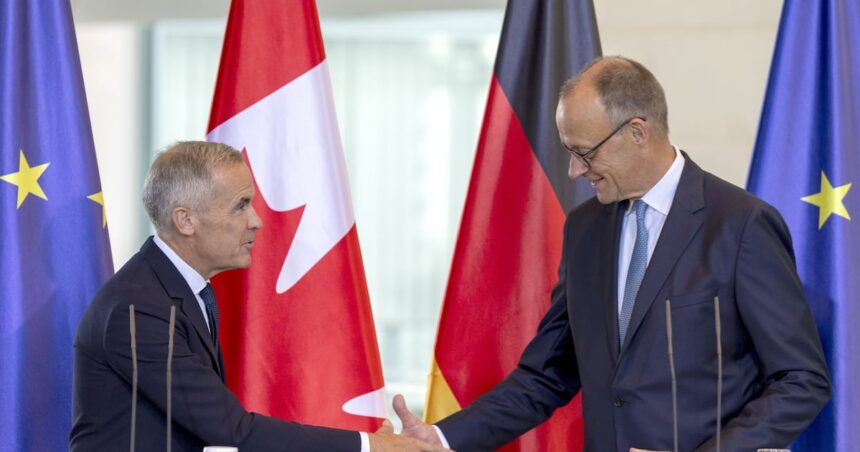In a significant move that signals Canada’s commitment to modernizing its naval capabilities, Prime Minister Justin Trudeau toured the ThyssenKrupp Marine Systems shipyard in Kiel, Germany yesterday, marking a critical advancement in the nation’s submarine procurement initiative. The visit represents more than a diplomatic courtesy—it underscores Canada’s serious consideration of the German manufacturer as one of only two qualified suppliers in the high-stakes competition to replace Canada’s aging Victoria-class submarine fleet.
“The security challenges we face in the 21st century demand modern naval capabilities that can protect our sovereignty across three oceans,” Trudeau stated during the shipyard tour. “This procurement isn’t just about military assets—it’s about securing Canada’s place in a rapidly evolving global security landscape.”
The procurement project, estimated at $15-20 billion, has narrowed to two European contenders: Germany’s ThyssenKrupp Marine Systems and France’s Naval Group. Both manufacturers bring distinctive technological advantages to the table, with the German Type 212CD offering advanced air-independent propulsion systems that allow for extended underwater operations without surfacing, while the French Barracuda-class submarines feature superior weapons integration capabilities.
Defence analysts note that this procurement decision carries particular weight given the deteriorating condition of Canada’s current submarine fleet. Admiral James Davidson, former Commander of the Royal Canadian Navy, told CO24 News that “Canada’s four Victoria-class submarines, purchased from the UK in 1998, have faced persistent mechanical issues and limited operational availability. The new fleet would represent a quantum leap in capability.”
The submarine acquisition comes amid growing tensions in the Arctic, where Russia has increased its military presence and China has declared itself a “near-Arctic state.” National security experts suggest the timing is crucial for Canada’s defence strategy.
“Submarine capabilities are particularly valuable in the Arctic context,” explained Dr. Margaret Chen, defence policy analyst at the Canadian Global Affairs Institute. “These vessels can operate beneath ice cover, gathering intelligence and maintaining a strategic presence in ways surface vessels simply cannot.”
Economic considerations also feature prominently in the procurement decision. Both competing manufacturers have pledged significant industrial benefits for Canada, with preliminary estimates suggesting the creation of approximately 2,000 high-skilled jobs across the country’s maritime industries over the project’s lifespan.
Minister of Innovation, Science and Industry François-Philippe Champagne emphasized the economic dimensions while speaking to CO24 Business: “Beyond the essential security benefits, this procurement represents a generational opportunity to advance Canada’s marine technology sector and create sustainable, high-value employment.”
The procurement timeline anticipates a final decision by mid-2026, with the first new submarine expected to enter service by 2035 – a schedule that naval experts have characterized as ambitious but necessary given the deteriorating state of the current fleet.
Opposition critics have questioned both the cost and timeline. Conservative defence critic James Bezan noted that “while the need for new submarines is clear, Canadians deserve assurance that this procurement will avoid the delays and cost overruns that have plagued previous major military acquisitions.”
The Prime Minister’s German shipyard visit included extensive briefings on construction methods, technological capabilities, and maintenance requirements – factors that will heavily influence the final procurement decision. Trudeau was photographed examining a Type 212 submarine hull section while discussing technical specifications with engineers.
As Canada advances this crucial defence procurement, the fundamental question remains: can the nation successfully navigate the complex technological, strategic and fiscal considerations to deliver this critical naval capability on time and on budget? For a maritime nation with the world’s longest coastline, the stakes could hardly be higher.










